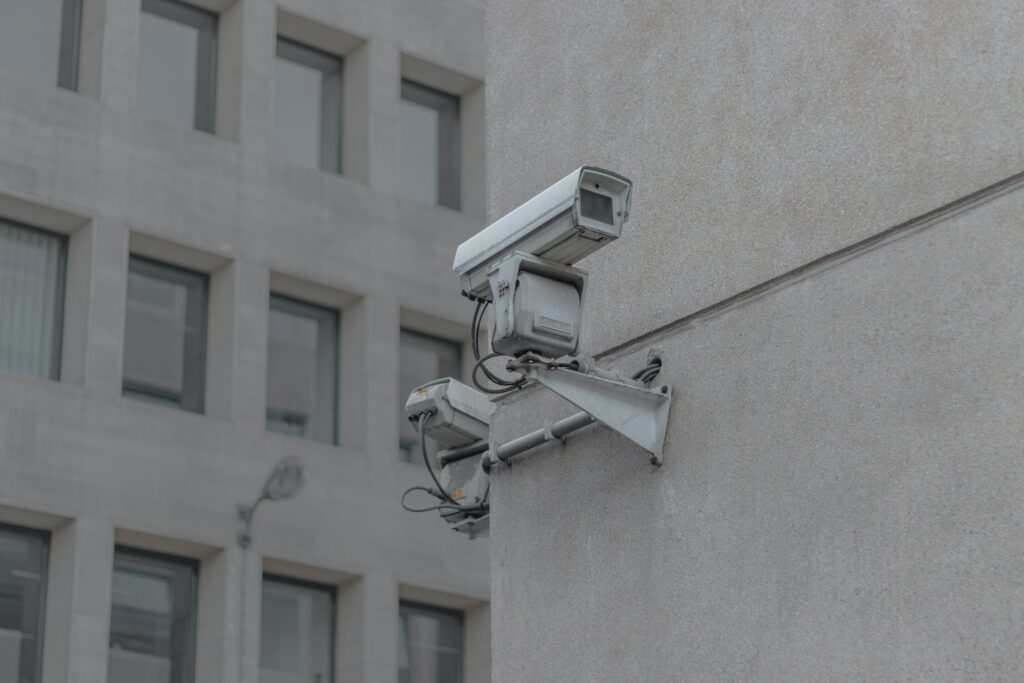Picture a modern commercial building. What comes to mind? Shimmering glass facades? Innovative workspaces? Cutting-edge designs?
But beyond these aesthetic elements, there’s a critical aspect that’s often overlooked – security. With the rise in security threats and technology advancements, security measures have become an integral part of commercial building design.
It’s a challenge, but one that architects are tackling head-on. In this guide, we’ll explore how security is woven into the very fabric of commercial building architecture. It’s about more than just locks and keys now.
Assessing security risks in commercial buildings
Performing a security risk assessment is the first step. This process involves three essential stages: identifying potential threats, evaluating current security measures, and determining areas of vulnerability.
- Identifying potential threats: The first stage is to identify the possible dangers your commercial building could face. Common security risks in commercial buildings include the following.
- Unauthorized access – This can be anything from opportunistic trespassing to well-planned intrusion. A study in 2019 by Statista showed that unauthorized access accounts for approximately 4000 of security incidents in commercial buildings in the U.S.
- Vandalism – Vandalism is an often overlooked but costly threat to commercial properties. According to the U.S. Small Business Administration, the annual cost of vandalism for businesses is estimated at $3370 per accident.
- Theft – Theft, both internal and external, is a significant concern. The Global Retail Theft Barometer 2022 reported that retail businesses alone lost over $50 billion to thefts.
- Evaluating current security measures – After the potential threats have been identified, the next step is to evaluate your existing security measures. You need to determine how effectively they protect your commercial building from the identified threats. This requires a careful, in-depth inspection of all current security systems and protocols.
- Determining areas of vulnerability – The final stage in the risk assessment process is to pinpoint where your security measures might be insufficient. This might include areas with inadequate lighting, unprotected access points, or outdated security systems.
To address these vulnerabilities, focus on layered security, which combines several measures like surveillance, access control, and intrusion detection.
Integrating CCTV cameras into commercial building design
Choosing the right security camera manufacturer also plays a pivotal role in modern security. The right commercial security camera system acts as a visual deterrent to potential intruders and provides valuable evidence if an incident occurs.
When integrating CCTV cameras into building architecture, consider their placement for optimal coverage, their visibility to act as a deterrent, and how they fit with the building’s aesthetics. Remember, it’s about blending security with style.

Modern Access Control Systems for Commercial Buildings
Access control systems are another cornerstone of commercial property security. They allow you to control who enters the premises and when, and can even limit access to specific areas.
The selection and integration of these systems into a building’s design require strategic planning, including consideration for the placement of readers, ease of use, and how they mesh with the overall architecture.
- Types of access control systems
- Keypads – A traditional access control method, which requires individuals to enter a passcode. According to the “Commercial Security Survey 2023” by Securitas, about 35% of commercial buildings still use keypad systems.
- Card readers – These systems use RFID or magnetic stripe cards for access.
- Biometric systems – This includes fingerprint, facial recognition, and iris scanners.
- Placement of readers – The position of access control readers can influence the system’s efficiency. Readers should be placed at optimal height and location for easy access and to maintain the flow of traffic.
- Ease of Use – An efficient access control system should be user-friendly. A survey by CNBC showed that 72% of employees prefer card readers or mobile access over traditional keys, citing ease of use.
- Integration with architecture – Integrating access control systems with a building’s design and architecture is a significant aspect. It should complement the aesthetics, functionality, and security strategy of the building.
Incorporating intrusion detection and alarm systems
Intrusion detection and alarm systems are designed to detect unauthorized activity and alert the necessary parties. They can range from motion sensors to glass-break detectors.
Incorporating these systems requires thoughtful planning. They must be effective without being overly intrusive to the building’s occupants or detracting from its visual appeal.
Designing secure common areas and shared spaces
Common areas and shared spaces require particular attention in commercial buildings. These areas should be designed to promote safety without sacrificing comfort and usability. Think about proper lighting, clear sightlines, and strategic placement of CCTV cameras. For inspiration, look to successful designs in modern office complexes or shared co-working spaces.
Cybersecurity considerations in commercial building architecture
With the advent of smart buildings, cybersecurity has become an integral part of commercial building security. Threats can range from hacking access control systems to compromising building management systems.
To counteract these risks, consider measures such as secure network infrastructures, regular software updates, and proper training for users. Integrating cybersecurity considerations from the get-go is essential in today’s digital age.
Conclusion
Security in commercial building design is a dynamic, multifaceted discipline. It demands an understanding of various technologies and the ability to integrate them seamlessly into the building’s architecture.
As you embark on your next architectural project, consider the layers of security discussed. Leverage modern solutions like CCTV cameras, access control systems, intrusion detection, and even cybersecurity measures. Remember, a secure building is not just a safe space; it’s also a springboard for peace of mind, productivity, and prosperity.
So, dig deeper, explore modern security solutions and technologies, and create spaces that are as secure as they are stunning. Let’s design a safer future together.




